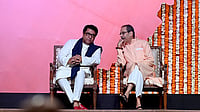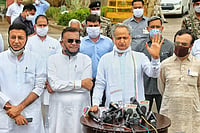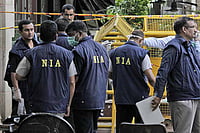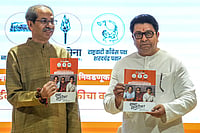No one put it more bluntly than Indira Gandhi. Delivering a lecture in Rome in 1981, she said that an intercontinental missile costs the same as setting up 65,000 primary schools. This candid juxtaposition explains why India is both a nuclear power and a world topper in illiteracy and child labour. Let us face it. India has chosen to develop military might in preference to childrens health and education.
Since the mid-60s, when the basic education strategy inspired by Mahatma Gandhi was officially abandoned, primary education has stayed visionless, serving mainly as an instrument of social selections. A high drop-out rate ensures that about two-thirds of the children who enrol in grade one do not survive in the system beyond grade eight. Malnutrition and poverty, an unattractive school and indifferent - often cruel - teaching are the well-known factors which contribute to early elimination from school. In the overwhelming majority of primary schools, the childs daily routine features dull chores and drills, interspersed with harsh words and beatings. No wonder only the strongest and the most determined survive long enough to become part of that one-third India for which politicians play Mandal and other games.
Rural enrolment has improved since the late 80s, mainly on account of the realisation among parents that educational qualifications matter. Private schools have surfaced in just about every manner and parents are patronising them despite their meagre means, though more often for boys than girls. State provision also looks a shade better, mainly due to a long-term soft loan from the World Bank, and external aid. But external funds havent discouraged states from trivialising education by hiring para-teachers.
Curriculum reform and improvement in textbooks are long overdue but theres no break in sight. If the newly-released national curriculum framework is a guide, primary educations set to get more oppressive, carrying out the responsibility of the nations moral upliftment before all else. The ncert, which prepared this framework, has been around long enough to know the issues but seems to be under political pressure to give value-education priority. As it is, an approach called mll (minimum levels of learning) has promoted the pursuit of atomised, behaviourist instruction as against a concern for individual potential and interests. An overt, moral agenda focusing on building a common Indian identity can be expected, under this government, to blur the distinction between education and indoctrination. The moral agenda is to be pursued by highlighting Indias contribution to world civilisation and redefining secularism.
The ncert document tries to douse such suspicions by quoting Gandhi. Starting with the opening sentence, he figures nine times! All the Western icons of child-centred, progressive pedagogy are also given due place. What is left unexplained is why moral training should be a priority in a system which is already so laden with moral rhetoric and which provides so limited an opportunity for purposive learning and autonomy.
(Krishna Kumar is a professor at the Department of Education, Delhi University, and a former head and dean.)


























